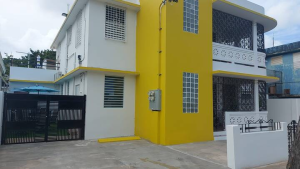Owning rental properties in San Juan, Puerto Rico, offers lucrative opportunities, whether you’re managing a vacation home or a long-term rental. With its rich culture, growing tourism industry, and vibrant economy, San Juan remains a top destination for investors and property owners alike. However, to fully capitalize on your rental property, effective management strategies are essential. This guide will walk you through actionable tips to maximize your rental income while keeping your properties in top shape.
Table of Contents
- Understand the San Juan Rental Market
- Optimize Your Rental Pricing Strategy
- Enhance Your Property’s Appeal
- Invest in Regular Maintenance and Upgrades
- Focus on Tenant Retention
- Utilize Online Marketing Channels
- Implement a Professional Property Management System
- Leverage Tax Incentives and Deductions
- Minimize Vacancy Periods
- Adapt to Market Changes
1. Understand the San Juan Rental Market
Before you can maximize your rental income, it’s essential to understand the rental landscape in San Juan. Research trends, such as:
- High-demand neighborhoods: Areas like Old San Juan, Condado, and Isla Verde typically attract both tourists and locals.
- Seasonal demand: Expect higher occupancy rates and rental prices during tourist high seasons, like winter months and major festivals.
Staying informed about local trends will help you set competitive yet profitable rental prices.
2. Optimize Your Rental Pricing Strategy
A strategic approach to pricing can significantly increase your rental income. Here are key steps:
- Dynamic Pricing: Adjust your rates based on demand, competition, and seasonality. Tools like Airbnb’s Smart Pricing or PriceLabs can automatically update rates to maximize income during peak times.
- Minimum Night Stays: For vacation rentals, consider setting a minimum number of nights during high-demand seasons to reduce turnover costs and maximize revenue from longer stays.
- Market Comparisons: Regularly compare your property’s rates to similar listings in San Juan. This helps you avoid underpricing while ensuring you remain competitive.
3. Enhance Your Property’s Appeal
Creating an attractive and functional rental space can set your property apart, allowing you to charge premium rates. Consider:
- Modern Amenities: Provide fast Wi-Fi, air conditioning, and fully equipped kitchens—must-haves for both long-term tenants and vacationers.
- Appealing Décor: Invest in tasteful, neutral decor that appeals to a broad audience. Highlight local culture with Puerto Rican-inspired art or furniture for added charm.
- Professional Photography: First impressions matter. High-quality photos can increase your listing’s appeal and drive more bookings.
4. Invest in Regular Maintenance and Upgrades
Maintaining your property ensures its value stays high and tenants are satisfied. Well-maintained properties can command higher rents. Implement a routine maintenance plan to:
- Handle repairs quickly: Prompt attention to issues like plumbing, electrical, or HVAC problems prevents costly long-term damage and tenant dissatisfaction.
- Upgrade when necessary: Regularly upgrade outdated appliances or fixtures to maintain your property’s competitive edge.
You might also want to invest in energy-efficient solutions (like LED lighting and efficient water systems), which can reduce operating costs and make your property more attractive to eco-conscious tenants.
5. Focus on Tenant Retention
For long-term rental properties, retaining tenants is key to minimizing vacancies and turnover costs. Here are strategies to encourage long-term leases:
- Competitive Lease Terms: Offer incentives such as discounts for signing longer leases or early payment options.
- Exceptional Communication: Be responsive to tenant requests and concerns. Good communication helps build trust, making tenants more likely to stay longer.
- Tenant Screening: Properly vet tenants to ensure they are responsible and reliable, reducing the risk of non-payment or property damage.
6. Utilize Online Marketing Channels
Maximize your property’s visibility to potential renters through multiple platforms:
- Vacation Rentals: Platforms like Airbnb, VRBO, and Booking.com can attract short-term renters. Ensure your property is listed on multiple sites for better exposure.
- Long-term Rentals: Use platforms like Zillow, Craigslist, and Facebook Marketplace to reach long-term tenants. Social media groups specific to Puerto Rico or San Juan can also be excellent marketing tools.
- Property Management Website: If you manage multiple properties, consider creating a website that showcases your listings, complete with photos, rates, and booking options.
7. Implement a Professional Property Management System
Managing multiple properties, dealing with tenants, and handling finances can be overwhelming. To stay organized and increase efficiency:
- Property Management Software: Tools like Buildium, TenantCloud, or AppFolio automate rent collection, maintenance requests, and lease management, freeing up your time and ensuring nothing falls through the cracks.
- Hiring a Property Management Company: If you’re managing several properties or living far from San Juan, consider hiring a professional property management company. They can handle tenant relations, maintenance, and marketing, helping you maximize rental income without the hassle.
8. Leverage Tax Incentives and Deductions
As a property owner in Puerto Rico, you can take advantage of various tax incentives, such as Act 60, which offers tax breaks for specific types of investments. Make sure to consult with a tax advisor to:
- Maximize deductions: Claim expenses like mortgage interest, property taxes, insurance, and maintenance costs.
- Leverage local incentives: Explore Puerto Rican tax laws that may allow you to keep more of your rental income in your pocket.
9. Minimize Vacancy Periods
Vacancies directly affect your rental income. To reduce downtime between tenants:
- Streamline Turnover Processes: Have a reliable cleaning and maintenance team on standby to prepare the property quickly for the next tenant.
- Offer Flexible Lease Terms: In off-peak seasons, offering shorter leases or month-to-month terms can help fill vacancies faster.
10. Adapt to Market Changes
Finally, staying adaptable to changing market conditions is crucial for sustained rental income. Monitor trends such as:
- Changes in tourism: Adjust short-term rental strategies based on local or global travel trends.
- Economic shifts: Be ready to pivot to long-term rentals if tourism or short-term rental demand dips.
Conclusion
Managing real estate in San Juan can be highly profitable if done strategically. By optimizing your pricing, maintaining your property, and providing excellent service, you can ensure that your rental income remains strong while minimizing vacancies. Whether you’re a local property owner or an international investor, these strategies will help you make the most of your San Juan realty investment.





